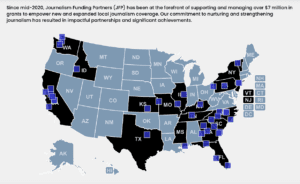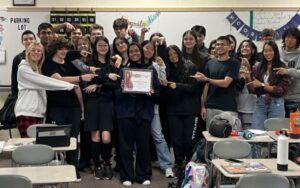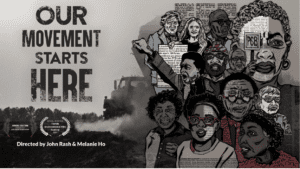By Gabriela Rivas-De Leon,
NC Local News Workshop Intern
I was recently navigating newsroom directories and noticed new titles that haven’t been commonplace over the past several years, especially here in North Carolina. You’ve still got your traditional beat reporters — politics, environment, education. But there are some new roles that have much more nuanced titles; positions like equity reporters or community engagement editors are more than ever surfacing in newsrooms around North Carolina.
Though the noble hope is that reporters have always had an unprejudiced and nondiscriminatory lens, we know that not to be the case. As editor Lisa Vernon Sparks, the Race, Culture & Community Engagement Editor at the Charlotte Observer, said, the rise in journalist jobs focusing on equity, diversity and inclusion is less about improving an already perfect industry, and more about starting to level the playing field.
A journalist of 20 years, Vernon Sparks talked with me at length about how she has seen Black and brown communities disregarded or disenfranchised by newsrooms. The newsroom she works for is a for-profit business that she said often has been run by an overwhelmingly white majority whose chief job has been catering to the (white) majority’s interest. Historically, communities of color have had “parachute” coverage, meaning that journalists would only cover tragedies or unrest, rarely going beneath the surface to see what systemic forces were at play.
“About five years ago, you started hearing about reporters or editors talking about intersections, like ‘I covered the intersection of race and housing, or I covered the intersection of race, politics and religion.’ The reporting is now about how these fault lines intersect with each other, and what kind of stories we can get out of them,” she said.
Vernon Sparks recommended some resources that work solely to help newsrooms navigate how to produce community-driven, accountable journalism that is aware of its past biases and uplifts rather than excludes. The American Press Institute launched the Source Matters tool, which focuses on tracking and improving the diversity of sources in a news story, and also manages Better News, which provides holistic guides to create sustainable newsrooms. The Maynard Institute, whose chief mission is to promote diversity and institutionalize equitable coverage, hiring and business practices, hosts Newsroom Transformations and Diversity Trainings.
The first-ever Director of Careers and Culture at the Marshall Project, Emma Carew Grovum, demonstrates that changing the journalistic culture from the inside out is just as profitable for newsrooms as it is for the communities they serve.
An inclusive work culture and environment should be as commonplace as the coffee pot in the break room, and Carew Grovum’s chief piece of advice was to take it back to the basics.
“Treat people like humans. Remember that you are human, and that so are your teammates, sources, and audience members. Too many journalists and newsroom leaders have contributed to a culture where we give passes for treating people like tasks,” she said.
An incredibly important part of creating an inclusive work environment is acknowledging but not relying solely on journalists of color. As Carew Grovum said, an equitable newsroom is one where journalists from all backgrounds can show up as their authentic selves, without having to box part of their identity away. She also wrote in an article for Source that allyship comes in many forms—as easy as posting jobs on Facebook Groups or killing the concept of one-time-only diversity and inclusion training. The process of equitable newsrooms starts at the personal level, and as Carew Grovum pointed out, it starts with creating a space where journalists from historically marginalized backgrounds get past simply surviving this industry and have the opportunity to thrive.
Several other newsrooms in NC have identified the need for reporters focusing on race and equity in their communities as one major step toward representing the communities they seek to serve. WFAE, Charlotte’s NPR news source, has a content strategy devoted to race and equity coverage. This includes their EQUALibrium series, for example, which explores race and equity issues in the city. ABC11, based in the Triangle, also focuses on race and equity as a coverage area and has hired reporters to focus on this reporting.
For EducationNC, a nonprofit provider of news, data, analysis and research on public education, reporter Rupen Fofaria brings race and equity topics to the center of education coverage in NC. He has recently written articles about challenges that teachers of color face, the school accountability model, a profile of someone whose life was changed from a community college program, and much more.
“The message I would give to any organization that’s interested in equity work is focusing on how equity, vision and statements can translate into action,” he said.
At EducationNC each article is audited to see whether it targets or includes under-reported issues through such lenses as socioeconomic status, race, ethnicity, gender identity, sexual orientation and immigration status. The EdNC team keeps a close look at how content is posted, making sure that the language and photos used in social media narratives align with their values. They’ve implemented an equity audit process that feels in tune with their newsroom, and will help them create products to better serve North Carolina.
ABC11, EducationNC and WFAE were participants in the NC Local News Workshop’s Media Equity Project and have expressed their dedication to ensuring more equitable reporting practices. How is your newsroom covering race and equity? Send us a note at NCLocal@elon.edu so we can continue the conversation.





